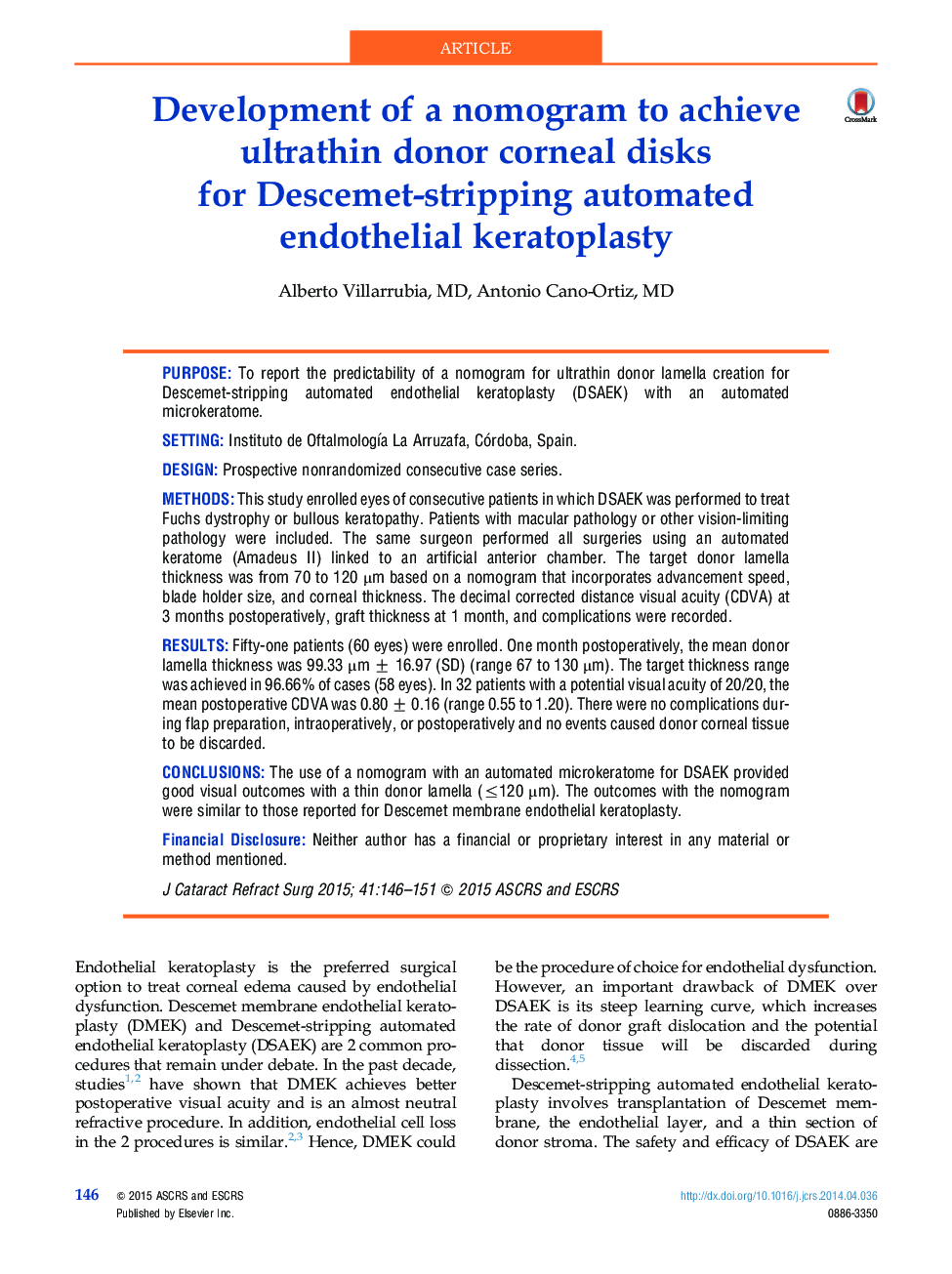| کد مقاله | کد نشریه | سال انتشار | مقاله انگلیسی | نسخه تمام متن |
|---|---|---|---|---|
| 4016328 | 1261945 | 2015 | 6 صفحه PDF | دانلود رایگان |

PurposeTo report the predictability of a nomogram for ultrathin donor lamella creation for Descemet-stripping automated endothelial keratoplasty (DSAEK) with an automated microkeratome.SettingInstituto de Oftalmología La Arruzafa, Córdoba, Spain.DesignProspective nonrandomized consecutive case series.MethodsThis study enrolled eyes of consecutive patients in which DSAEK was performed to treat Fuchs dystrophy or bullous keratopathy. Patients with macular pathology or other vision-limiting pathology were included. The same surgeon performed all surgeries using an automated keratome (Amadeus II) linked to an artificial anterior chamber. The target donor lamella thickness was from 70 to 120 μm based on a nomogram that incorporates advancement speed, blade holder size, and corneal thickness. The decimal corrected distance visual acuity (CDVA) at 3 months postoperatively, graft thickness at 1 month, and complications were recorded.ResultsFifty-one patients (60 eyes) were enrolled. One month postoperatively, the mean donor lamella thickness was 99.33 μm ± 16.97 (SD) (range 67 to 130 μm). The target thickness range was achieved in 96.66% of cases (58 eyes). In 32 patients with a potential visual acuity of 20/20, the mean postoperative CDVA was 0.80 ± 0.16 (range 0.55 to 1.20). There were no complications during flap preparation, intraoperatively, or postoperatively and no events caused donor corneal tissue to be discarded.ConclusionsThe use of a nomogram with an automated microkeratome for DSAEK provided good visual outcomes with a thin donor lamella (≤120 μm). The outcomes with the nomogram were similar to those reported for Descemet membrane endothelial keratoplasty.Financial DisclosureNeither author has a financial or proprietary interest in any material or method mentioned.
Journal: Journal of Cataract & Refractive Surgery - Volume 41, Issue 1, January 2015, Pages 146–151